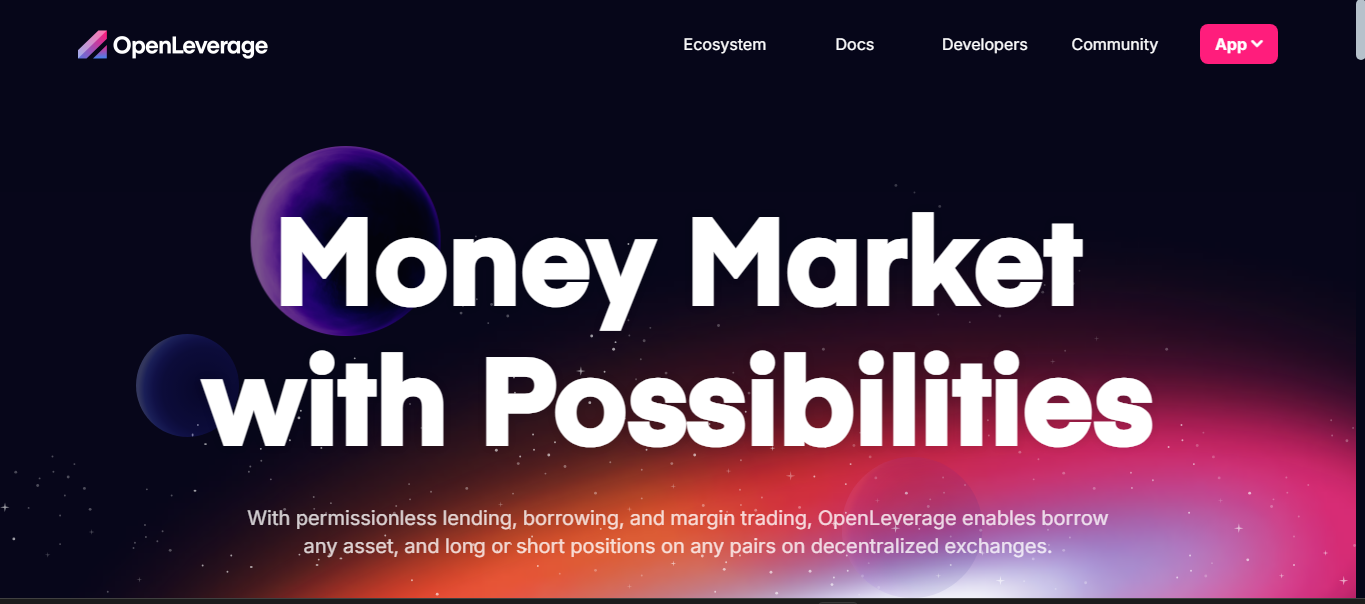OpenLeverage review - decentralized margin platform with big ambitions, real constraints

OpenLeverage started in 2021 aiming to bring permissionless margin trading to DeFi. Unlike typical DEXs, it lets users long or short tokens with leverage directly on Ethereum and BNB Chain, borrowing from lending pools. The idea is bold - merging on-chain spot and margin without centralized custody or KYC. But bold ideas often meet harsh liquidity realities.
How the platform works
At the core, OpenLeverage connects lenders and traders. Lenders supply assets into pools and earn interest, traders borrow those assets to go long or short, paying variable interest rates. Smart contracts automate collateral management, liquidation and interest collection.
Highlights include:
- Cross margin and isolated margin options
- Support for hundreds of token pairs on Ethereum and BNB Chain
- Permissionless market creation, meaning anyone can open a new trading pair
The leverage model isn’t capped by fixed numbers - it’s determined by pool parameters and collateral. Typically users see up to 5x on many pairs.
Trading volume and liquidity depth
Total value locked fluctuates between 15 and 25 million dollars, with daily trading volume averaging around 500 thousand dollars. While decent for a niche protocol, it’s tiny compared to giants like GMX or perpetual DEXs on Arbitrum. Slippage is common on mid-size trades. Liquidity fragmentation across many small pools means larger orders often move markets, triggering liquidation cascades.
Yield and token incentives
The OLE token powers incentives. It’s used for:
- Governance votes on risk parameters and new listings
- Boosting APY for lenders via staking
- Sharing a slice of protocol revenue
There’s also OpenLeverage’s dual farming approach where liquidity providers earn both swap fees and OLE rewards. While attractive, it means returns rely heavily on ongoing trader borrowing - if borrowing slows, APYs drop quickly.
Security audits and risks
OpenLeverage has completed audits by SlowMist and PeckShield. Smart contracts are open-source, with bug bounties advertised. So far no major exploits have been recorded. However, the platform remains exposed to standard DeFi risks: oracle attacks, flash loan manipulations and cascading liquidations in thin markets.
User experience and community
The UI is sleek with integrations like TradingView charts and portfolio breakdowns. Wallet connection is fast, swaps and borrows happen in a few clicks. Community is mostly concentrated on Telegram and Twitter, with dev updates frequent but trading chatter relatively low - typical for more technical DeFi hubs.
Pros & cons
Pros
- Fully decentralized spot + margin with no KYC
- Permissionless pair creation, hundreds of tokens supported
- Competitive APYs for lenders, especially on emerging pairs
- Audited contracts and public bug bounty efforts
Cons
- Shallow liquidity leads to slippage and liquidation risk
- Reliant on borrower activity to sustain yields
- Still a niche protocol without mainstream adoption
- Exposure to common DeFi exploits without insurance backstops
Final take - innovative, risky, for DeFi natives
OpenLeverage delivers on its promise of decentralized margin trading. It combines lending, borrowing and leverage in a way few on-chain platforms attempt. For DeFi enthusiasts who understand collateral risks, liquidity dynamics and smart contract exposures, it’s an exciting tool.
But it’s not for casual users or large trades. Thin pools, variable APYs and the ever-present danger of fast liquidations make it better suited to experienced on-chain traders willing to monitor positions closely. For everyone else, traditional spot DEXs or more liquid perps platforms may be safer.
Disclaimer
“This content is for informational purposes only and does not constitute financial advice. Please do your own research before investing.”
.png)







%203.svg)
%203.svg)




















